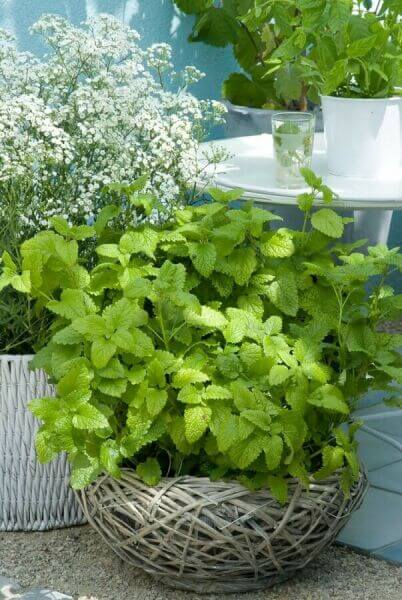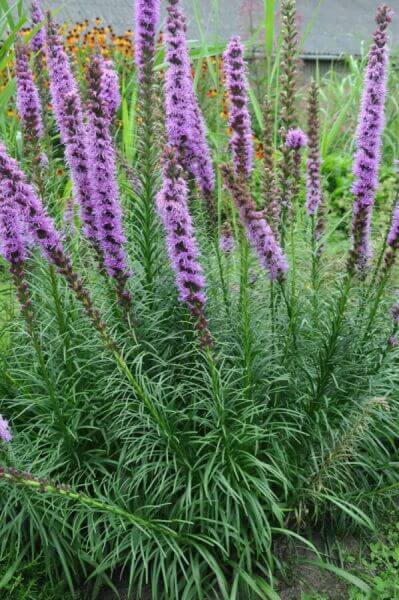Best Hedging Plants For Farm Boundaries
Best Hedging Plants For Farm Boundaries
Blog Article
Hedging Plants For Wildlife Friendly Gardens
Boost your garden's appeal with lush hedge ranges such as Yew (Taxus), Thuja, Laurel, Photinia, and Bamboo, celebrated for their structural stability and environmental benefits.
Yew and Thuja supply evergreen coverage and winter season resilience, while Laurel provides quick growth and broad, aromatic leaves.
Photinia includes seasonal charm with its dynamic red foliage, and Bamboo provides a low-maintenance, serene atmosphere.
These hedges enhance air quality, decrease sound, and develop tranquil, private spaces.
Appropriate planting, spacing, and upkeep ensure vigorous development and eco-friendly harmony.
Explore how these rich ranges can raise your garden's beauty and well-being.
Key Takeaways
Change Your Garden With Lush Hedge Ranges
- Select Yew for its thick, evergreen growth and unrivaled durability.
- Go with Laurel for its quick growth and broad leaves, guaranteeing quick personal privacy.
- Pick Photinia for its lively seasonal foliage, which turns a striking dark red.
- Utilize Bamboo for a low-maintenance, winter-hardy hedge with aesthetic appeal.
- Area plants 2-3 per meter and prune frequently for optimum development and health.
Popular Hedge Plants
When changing a garden with lavish hedge ranges, it's essential to consider popular hedge plants such as Yew, Thuja, Laurel, and Photinia due to their unique characteristics and benefits.
Yew (Taxus) is highly esteemed for its longevity and dense, green development, making it a prime option for sustaining landscapes.
Thuja is kept in mind for its evergreen foliage and robust winter season strength.
Photinia includes seasonal vibrancy with red leaves that darken over time, creating vibrant visual appeal.
Laurel uses quick development and aromatic, broad leaves, suitable for quick privacy.
Additionally, Bamboo is an excellent option for atmosphere, providing a low-maintenance, winter-hardy choice that enhances the garden's aesthetic with its classy, swaying walking canes.
These choices accommodate a range of horticultural requirements and preferences.
Benefits of Garden Hedges
Garden hedges use a wide variety of benefits, making them a valuable addition to any landscape. These natural barriers are cost-effective to carry out and offer significant wind defense, improving air circulation and adding to noise reduction. The thick foliage of hedges like Thuja and Beech makes sure privacy by obstructing presence, producing a remote and serene environment.
Hedges likewise play an important role in microclimate guideline, offering a stable environment that promotes plant growth and decreases temperature variations. Their elaborate leaf structures filter pollutants, improving air quality and adding to a healthier garden environment.
Furthermore, hedges master noise decrease, taking in and deflecting acoustic waves to lower ambient noise levels. This double performance of offering both acoustic and visual privacy boosts the overall serenity and visual appeal of any garden.
Planting and Upkeep Tips
For a successful hedge, careful preparation of the planting area is vital. Ensure the soil has appropriate pH and drain to support strong root development.
Space the plants properly for the chosen species. Water the hedge regularly during its initial development stage, adjusting as needed with seasonal modifications.
Carry out a systematic pest control and disease avoidance method, using organic or chemical treatments when needed. Frequently inspect for aphids, mites, and fungal infections.
Apply mulch to keep moisture and reduce weeds. Seasonal pruning promotes thick development and air circulation, essential for plant health.
Following these guidelines will help you cultivate a dynamic, properly maintained hedge that boosts the beauty of your garden.
Spacing and Trimming Guidelines
Spacing and Trimming Guidelines
Proper spacing and trimming are crucial for cultivating healthy, visually appealing hedges. Adequate spacing ensures each plant receives sufficient nutrients, light, and air flow.
Follow these standards for optimum hedge upkeep:
- Spacing: Position hedge plants 2-3 plants per meter to motivate robust development.
- Pruning Methods: Regular pruning is important for preserving desired hedge height and shape. Trim new development in summer season and cut down older wood throughout winter.
- Seasonal Care: Adjust trimming approaches and schedules according to seasonal requirements to guarantee plant health.
- Hedge Height: Regularly monitor and cut to keep the wanted hedge height and accomplish uniform aesthetic appeals.
Abiding by these actions will ensure your hedge thrives, boosting both the appeal and functionality of your garden.
Choosing the Right Hedge
Picking the Right Hedge
Picking the suitable hedge involves examining elements such as mature height, foliage density, and ecological durability. Effective hedge plant selection requires understanding each species' development qualities and site-specific adaptability.
For example, Yew (Taxus) provides excellent durability and dense growth, while Thuja is significant for its winter strength. Furthermore, thinking about upkeep requirements is crucial; fast-growing types like Laurel or Privet demand routine trimming, whereas low-maintenance alternatives like Bamboo or Ivy might be preferable for those looking for very little upkeep.
Ecological factors such as soil type, light schedule, and wetness conditions should likewise guide the selection procedure. This cautious approach makes sure the chosen hedges will prosper, providing both visual and practical advantages to the garden landscape.
Delivery and Planting Recommendations
To ensure your hedge plants flourish, they need to be delivered by specialized couriers and planted without delay upon arrival.
Follow these essential steps for effective planting:
- Soil Preparation: Improve the soil with organic matter to improve drain and nutrient content.
- Planting Depth: Produce a trench two times the width and equivalent to the depth of the root ball.
- Watering Strategies: Water thoroughly after planting, keeping the soil consistently damp however not filled.
- Mulching: Apply a layer of mulch to retain moisture and suppress weeds.
Client Assistance and Service
Offered the vital function of timely assistance in horticultural pursuits, our customer support team is offered 6 days a week through telephone, e-mail, and social networks to use skilled advice and swiftly address any concerns. Their dedication to quick response times guarantees consumer fulfillment by resolving queries related to plant health, optimal planting methods, and upkeep schedules.

Communication Technique
Within 24 hr
Within 24 hours
This detailed assistance system, enhanced by a stellar 9.3/ 10 customer rating, highlights our commitment to improving the gardening experience for each customer.
Often Asked Concerns
The Length Of Time Does It Consider Hedge Plants to Develop?
Hedge plants usually need one to 3 years to end up being totally developed, with the precise period varying by species and growing conditions.
Efficient care during this critical period is essential for robust development. Constant watering, alert weed control, and suitable fertilizer application are critical in promoting strong root development.
For example, fast-growing species like Laurel might develop faster, while slower-growing varieties such as Yew might take longer. Diligent upkeep speeds up the establishment process, leading to thick and healthy hedges.
What Are the very best Hedge Plants for Privacy?
The concern of the very best hedge plants for privacy involves examining evergreen and deciduous alternatives.
Evergreen hedges like Thuja, Laurel, and Cypress offer year-round coverage, making sure constant privacy.
On the other hand, deciduous hedges such as Beech use seasonal privacy, shedding leaves in colder months.
Key maintenance ideas for privacy hedges include routine trimming, fertilizing in spring, and proper spacing-- normally 2 to 3 plants per meter.
Furthermore, consistent watering and thorough weed removal are crucial for promoting healthy, thick growth.
Can Hedge Plants Bring In Wildlife to My Garden?
Yes, hedge plants can draw in wildlife to your garden by providing necessary benefits like shelter, food, and nesting websites, thus enhancing regional biodiversity. For example, yew, holly, and laurel are exceptional for attracting birds, while ivy supports a range of insects.
Nevertheless, it is very important to note that there are some downsides, such as increased maintenance to handle pests and regular maintenance. Carefully choosing and keeping hedge varieties can assist balance these benefits and downsides, eventually fostering a sustainable and vibrant ecosystem in your garden.
Are There Any Blooming Hedge Plants Available?
Yes, there are flowering hedge plants offered that can enhance the charm of your garden.
For instance, Elaeagnus, likewise referred to as here Olive Willow, produces aromatic white flowers in the fall, including a touch of sophistication.
Photinia, another popular choice, showcases dynamic red leaves that develop into an abundant green, developing a dynamic visual effect throughout the seasons.
To guarantee these plants prosper, it's necessary to practice proper pruning methods and seasonal maintenance, such as cutting brand-new development in the summer season and cutting down in the winter season.
These measures will help maintain the health and aesthetic appeal of your flowering hedges.
How Do I Prevent Insects in My Hedge Plants?
To prevent insects in hedge plants, employ natural insect control techniques and preserve appropriate hedge care. Introduce useful pests like ladybugs, which victimize damaging bugs, to produce a well balanced community.
Routinely examine your hedges for signs of invasion and immediately eliminate any affected parts to prevent the spread. Ensure the health of your hedges by using well balanced fertilizers and supplying sufficient water.
Use mulching to retain soil moisture and correct spacing to lower plant tension and promote robust growth. These practices collectively help in decreasing bug problems and preserving a healthy hedge.
Conclusion
In essence, choosing the ideal hedge ranges such as Yew, Thuja, and Laurel can transform any garden into a tranquil sanctuary. These plants provide year-round plant, improve aesthetic appeal, and deal practical benefits like sound reduction and wind protection.
Correct planting methods, accurate spacing, constant watering, and seasonal trimming are vital for optimum growth.
Dependable shipment services and professional customer assistance ensure a smooth experience from purchase to planting, making it simpler than ever to raise your outdoor area.
Garden hedges provide a multitude of advantages, making them a valuable addition to any landscape. These natural barriers are economical to implement and supply significant wind security, enhancing air flow and contributing to noise reduction. The thick foliage of hedges like Thuja and Beech ensures personal privacy by obstructing exposure, developing a peaceful and remote environment.

Pruning Techniques: Routine pruning is necessary for preserving desired hedge height and shape. Cut new growth in summer season and cut back older wood during winter.
Report this page